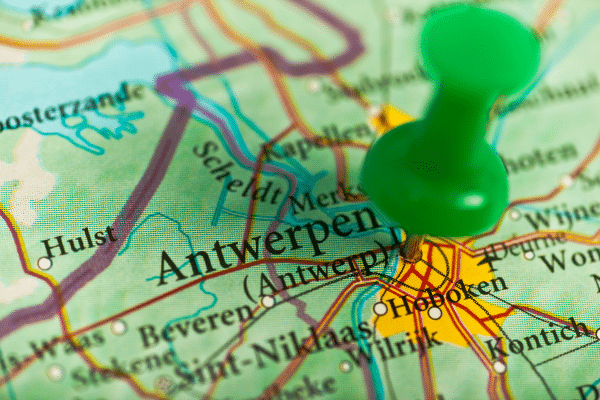Antwerpen is een bruisende stad met veel troeven, maar ook veel uitdagingen. Een van de grootste knelpunten is mobiliteit. De Antwerpse ring is al jaren overbelast, met files, ongevallen en luchtvervuiling tot gevolg. Daarom werkt de Vlaamse overheid aan een ambitieus project om de ring af te sluiten en te verbeteren: de Oosterweelverbinding.

De Oosterweelverbinding is al in 1996 in verschillende vormen voorgesteld. Het hoofddoel is altijd geweest om een nieuwe weg aan te leggen tussen de linker- en rechteroever van de Schelde. Daarmee wordt de Antwerpse Ring opgeheven. De weg zal grotendeels bestaan uit tunnels, onder de Schelde maar ook onder delen van de stad en het Albertkanaal. Op de rechteroever zal het tunnelcomplex aansluiten op de huidige ring ter hoogte van het Sportpaleis.
Naast het maken van een voorheen onbestaande verbinding voor de ringweg, heeft het project verschillende andere doelstellingen.
De Oosterweelverbinding zal een grote impact hebben op het uitzicht en de beleving van Antwerpen. De stad zal meer verbonden zijn met haar omgeving, met de haven en met de rivier. Hierdoor zal de ring niet langer een barrière vormen. Integendeel, hij zal een schakel vormen tussen buurten en stadsdelen. Antwerpenaren zullen kunnen genieten van meer rust, ruimte en zuurstof in hun stad.
Enkele voorbeelden van hoe Antwerpen zal veranderen na de Oosterweelverbinding zijn:
De Oosterweelverbinding is een complex en grootschalig project dat in verschillende fasen wordt uitgevoerd. In 2018 is de eerste aanleg gestart op de Linkeroever en in Zwijndrecht. Inmiddels is bekend geworden dat gestart wordt met de bypass van ringweg R1, een nieuwe fietsbrug voor de Ijzerlaan, de kanaaltunnels, de renovatie van de bestaande Park and Rides en het nieuwe Knooppunt Oosterweel. Naar verwachting is de hele Oosterweelverbinding in 2030 klaar.
Als je meer wilt weten over de Oosterweelverbinding, kun je de website bezoeken. Daar vind je het laatste nieuws, de huidige stand van zaken, de geplande werkzaamheden, de verwachte overlast, de toekomstbeelden en nog veel meer.
De Oosterweelverbinding is een project van Lantis, een ontwikkelaar van complexe mobiliteitsprojecten in de regio Antwerpen. Lantis werkt samen met verschillende partners, zoals de Vlaamse overheid, de stad Antwerpen, de haven van Antwerpen, burgerbewegingen en aannemers. Samen bouwen ze aan een stad en regio waar het goed wonen, werken, ondernemen en bezoeken is.